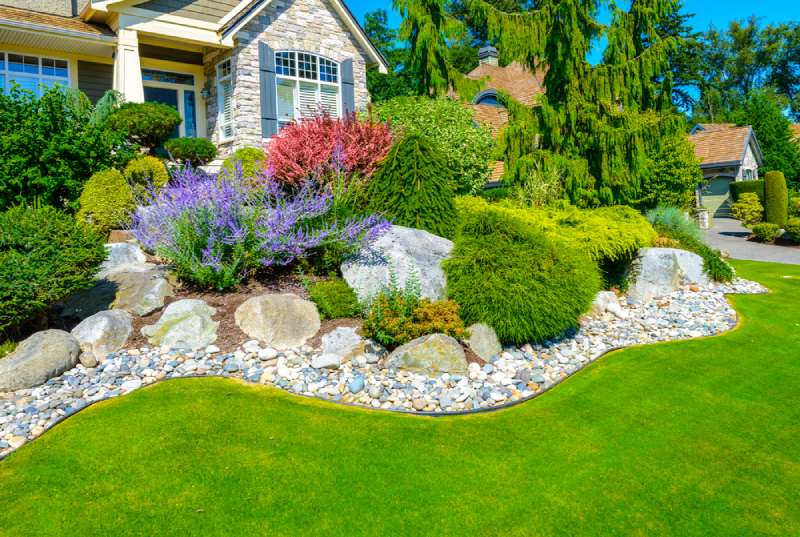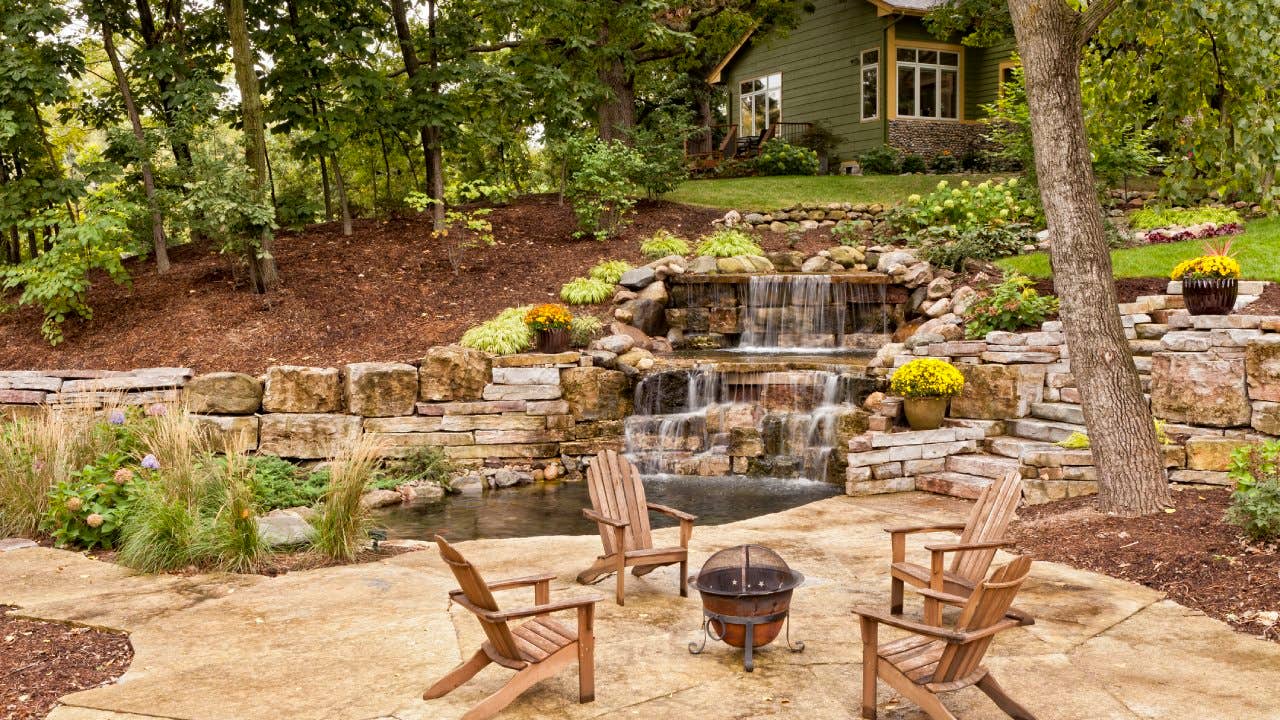Trusted Landscaping Contractor Jacksonville: Enhancing Your Home's Visual Charm
Trusted Landscaping Contractor Jacksonville: Enhancing Your Home's Visual Charm
Blog Article
Elevate Your Building's Aesthetic With Lasting Landscaping Designs and Eco-Friendly Practices

Benefits of Lasting Landscaping
Applying sustainable landscaping practices not only saves all-natural sources but likewise promotes biodiversity and enhances overall ecological health and wellness. By picking environment-friendly landscape design techniques, residential or commercial property proprietors can gain a wide range of benefits that prolong past just aesthetic allure. One significant benefit is the reduction of water consumption through using drought-resistant plants, rain gardens, and effective irrigation systems. This not just decreases utility expenses but likewise adds to water preservation efforts in the community.
Moreover, sustainable landscaping can boost soil wellness by decreasing making use of chemical plant foods and pesticides, therefore producing a much healthier atmosphere for plant development and valuable dirt microorganisms. This, in turn, improves the overall durability of the landscape to withstand ecological stressors and environment change influences - landscaping company Jacksonville. In addition, sustainable landscape design practices can bring in diverse wildlife, consisting of pollinators like bees and butterflies, cultivating a much more vibrant and well balanced community within the residential or commercial property
Incorporating Native Plants
To develop upon the benefits of sustainable landscaping, a calculated emphasis on integrating indigenous plants can better boost eco-friendly strength and advertise biodiversity within the landscape. Indigenous plants are species that naturally occur in a particular location and have actually progressed to flourish in the regional environment, soil conditions, and community. By including native plants in landscaping layouts, property proprietors can lower water use, decrease the requirement for chemical pesticides and fertilizers, and sustain the neighborhood wild animals population.
Incorporating native plants also aids in maintaining the unique personality and identification of a region's flora. These plants frequently require much less maintenance as soon as developed, making them a sustainable and cost-efficient landscape design solution over time. In addition, native plants can attract indigenous pollinators like butterflies and , adding to the overall health of the community.
When selecting native plants for landscaping jobs, it is important to select types that are fit to the particular ecological problems of the website. Consulting with botanical yards or local baby rooms can give beneficial support on choosing the right indigenous plants for a certain location. By incorporating native plants right into landscaping layouts, homeowner can produce lovely, sustainable outside spaces that benefit both the area and the atmosphere.

Water Preservation Strategies
Reliable watering techniques play a vital function in sustainable landscaping techniques, making certain optimal water preservation initiatives in exterior areas. Carrying out methods such as drip irrigation, rain harvesting, and wise irrigation systems can significantly reduce water wastefulness while keeping a healthy landscape. Drip watering provides water directly to the roots of plants, decreasing dissipation and runoff. Rain gathering involves accumulating rain from roofing systems and storing it for later usage in irrigation, reducing the dependence on community water resources. Smart irrigation systems use climate data and dirt wetness levels to change sprinkling timetables, stopping overwatering and promoting water effectiveness.
In addition to innovative irrigation approaches, xeriscaping is another water-saving landscaping strategy that concentrates on utilizing drought-resistant plants, compost, and efficient irrigation to develop a low-water landscape design - landscaping companies Jacksonville. By picking native plants that are appropriate to the regional environment and dirt conditions, homeowner can minimize the demand for extreme watering, inevitably preserving water and promoting a sustainable outside setting
Eco-Friendly Hardscaping Concepts
Enhancing exterior spaces with environment-friendly hardscaping attributes can add considerably to lasting landscape design techniques. Opt for materials like reclaimed timber, recycled concrete, or natural stone to reduce environmental effect when thinking about hardscaping aspects. These materials not only include an one-of-a-kind aesthetic interest your exterior area however likewise reduce the demand for brand-new resources removal.
Executing permeable paving choices such as gravel or permeable concrete can help in reducing water runoff and advertise groundwater recharge. These options enable rainwater to seep right into the ground, protecting against disintegration and decreasing the worry on stormwater systems.
Incorporating native plants right into hardscaping styles can even more boost eco-friendliness by sustaining local wild animals and minimizing the requirement for excessive weblink watering or chemical therapies. By incorporating green wall surfaces or vertical yards, you can present more plant life into city settings, boosting air high quality and biodiversity.
Incorporating energy-efficient lights, such as solar-powered LEDs, into hardscaping layouts can decrease electricity intake and lower your residential property's carbon footprint. Focusing on environmentally friendly hardscaping concepts not only improves the elegance of your outdoor area but likewise shows a commitment to ecological stewardship.
Upkeep Tips for Sustainable Landscapes

Consistently prune plants to promote healthy and balanced development and stop overgrowth that can lead to pest illness or problems. Use organic plant foods to nurture the soil and plants without dangerous chemicals that can leach into the atmosphere.
Verdict
In conclusion, sustainable landscaping methods use countless advantages for homeowner, from boosting the visual allure of the environments to advertising ecological preservation. By incorporating indigenous plants, executing water conservation techniques, and utilizing environment-friendly hardscaping concepts, homeowner can develop attractive landscapes that are likewise ecologically accountable. With proper maintenance, lasting landscapes can grow and add to a much healthier ecological community for both human beings and wild animals.
Moreover, sustainable landscaping can boost dirt health and wellness by reducing the usage of chemical fertilizers and chemicals, thereby developing a much healthier atmosphere for plant growth and beneficial dirt microorganisms.To build upon the benefits of lasting landscaping, a calculated emphasis on incorporating indigenous plants can additionally enhance environmental durability and promote biodiversity within the landscape. By including indigenous plants in landscape design designs, home owners can minimize water use, lessen the need for chemical pesticides and plant foods, and support the local wild animals population.
These plants often call for less maintenance as soon as established, making visit the site them a lasting and affordable landscape design option in the lengthy run. By integrating indigenous plants into landscape Recommended Reading design designs, property owners can develop lovely, sustainable outside rooms that benefit both the setting and the community.
Report this page